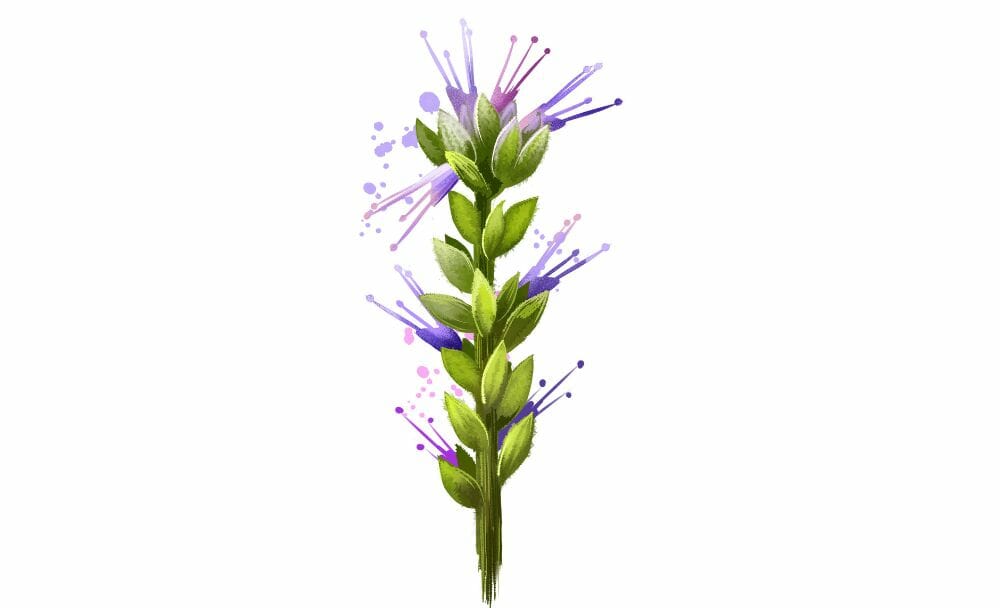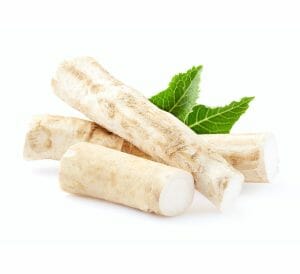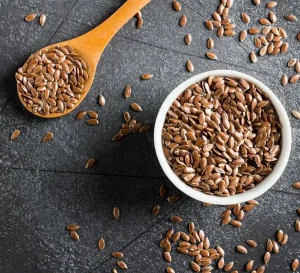
This article is reviewed by an expert
Picrorhiza kurroa, commonly known as Kutki or Katuki, is a highly regarded herb renowned for its hepatoprotective properties and diverse pharmacological activities (1).
With a history of medicinal use dating back 5000 years, Katuki’s significance in traditional medicine is well-established. One of its key benefits lies in its ability to balance Pitta and Kapha, which aids in regulating acidity, digestion, and fat metabolism. By acting as a cooling agent, Picrorhiza kurroa helps remove excess fire energy from the body, leading to improved digestion and metabolism of carbohydrates, proteins, and fats (1).
Let’s delve deeper into the incredible benefits and uses of Picrorhiza kurroa and explore its therapeutic potential.
Ayurvedic Properties of Picrorhiza Kurroa
Picrorhiza kurroa is known as Katuki in Ayurveda. It is characterised by its Tikta (bitter) taste, Ruksha (dry) and Laghu (light) qualities, and Sheeta (cooling) potency. After digestion, Katuki leaves a Katu (pungent) taste. Moreover, it exhibits Kapha-pitta-hara properties, helping to balance the Kapha and Pitta Doshas (1).
Benefits of Picrorhiza Kurroa
1. Hepatoprotective Activity (1)
Primary Benefits: Picrorhiza kurroa, or Katuki, has gained popularity as a hepatoprotective agent due to its ability to support liver health. Studies have shown that the plant’s extract, particularly the compound Picroliva iridoid glucoside, aids in liver regeneration and suppresses harmful Kuffer cells.
Secondary Benefits: As such, Katuki is used effectively in treating various liver conditions, such as fatty liver, viral hepatitis, cirrhosis, and more. The hepatoprotective action of picroliv has also shown promising results against toxins like paracetamol, carbon tetrachloride, alcohol, and aflatoxin.
2. Anti-Asthmatic Activity (1)
Primary Benefits: The presence of Phenolic Glycoside named androsin in Picrorhiza kurroa contributes to its anti-asthmatic effects. Studies have demonstrated that androsin inhibits bronchial obstruction induced by allergens and Platelet-activating factor (PAF) in guinea pigs.
Secondary Benefits: Furthermore, Picrorhiza kurroa has also shown the ability to inhibit histamine release in guinea pigs’ lungs, indicating its potential in managing asthma symptoms.
3. Anticancer Activity (1)
Primary Benefits: Research shows that picroliv, derived from Picrorhiza kurroa, exhibits protective action against chemically induced tumours. This purified iridoid glycoside mixture has shown antitumor responses in mice models by inhibiting sarcoma development and papilloma formation.
Secondary Benefits: Additionally, Picrorhiza kurroa’s active components, such as Kutkin, Picroside I, and Kutkoside, have also shown potential anti-carcinogenic properties by regulating cell cycles, inducing apoptosis, and acting as metal ion chelators and free radical scavengers.
4. Antimicrobial Activity (1)
Primary Benefits: The rhizome extract of Picrorhiza kurroa has demonstrated antibacterial and antifungal properties against various strains.
Secondary Benefits: Researchers have also identified endophytes in the plant that contribute to its antimicrobial activity against human pathogens.
5. Anti-Inflammatory Activity (1)
Primary Benefits: Picroliv has been shown to have anti-inflammatory properties. It effectively reduces paw oedema and granuloma formation in rats. Moreover, studies have explored its potential therapeutic role in ulcerative colitis.
Secondary Benefits: Additionally, compounds like kutkin, Picroside-1, and Kutkoside found in Picrorhiza kurroa have also exhibited anti-inflammatory activity.
6. Anti-Diabetic Activity (1)
Primary Benefits: The plant’s extract has been found to increase insulin production and have beneficial effects on diabetes management.
Secondary Benefits: The extracts have also shown potential in managing type-2 diabetes induced by streptozotocin-nicotinamide.
7. Antioxidant & Immunomodulatory Activity (1)
Primary Benefits: The aqueous and ethanolic extracts of Picrorhiza kurroa have been reported to stimulate humoral responses and various immune mechanisms. A biopolymeric fraction from the plant has also been shown to stimulate CD4+ and CD8+ T cells, further contributing to its immunomodulatory effects.
Secondary Benefits: Additionally, the ethanolic extract of Picrorhiza kurroa has been reported to scavenge free radicals, making it a potential natural antioxidant supplement.
Traditional Therapeutic Uses of Picrorhiza Kurroa (1)
1. Hridroga (Heart Disease): A mixture of Katuki and Madhuka with sugar dissolved in water is used in cases of Pittaj Hridroga (heart disease with an imbalance of the Pitta dosha).
2. Pandu (Anaemia): For managing anaemia, a combination of Katuki, sugar, and Drona Pushpi juice is applied as Anjana (collyrium).
3. Kushtha (Skin Disorders): Katuki is used internally along with other herbs like Ativisha, Ushira, and Chandana for the treatment of skin disorders.
4. Diabetic Diuresis: Picrorhiza kurroa is used extensively to manage diabetic diuresis.
5. Cough: The plant has been traditionally used to relieve cough.
How To Use Picrorhiza Kurroa?
Picrorhiza kurroa or Katuki can be used in the form of capsules, powder, decoction and infusions. You must consult an Ayurvedic practitioner to know the correct manner of taking Picrorhiza kurroa, based on your condition.
Dosage of Picrorhiza Kurroa (2)
Usually, 1- 3 gm of Picrorhiza kurroa is considered safe in powder form. However, the dosage usually depends highly on your medical condition, body constitution and Dosha imbalance. Therefore, you must consult an Ayurvedic doctor before using Katuki.
Side Effects of Picrorhiza kurroa
Picrorhiza kurroa is generally considered safe for consumption if taken in healthy or prescribed amounts. However, just like with any herbal remedy, you must consult an Ayurvedic doctor before using it, especially if you are pregnant, breastfeeding or have any medical condition.
The Takeaway
Picrorhiza kurroa stands as a remarkable herb with a rich history of medicinal use. Its hepatoprotective properties and diverse pharmacological activities have earned it high regard in Ayurvedic medicine.
From balancing Pitta and Kapha to aiding in diabetes management, Katuki offers a range of benefits that can address various health issues.
Additionally, its anti-asthmatic, anticancer, antimicrobial, anti-inflammatory, and anti-diabetic properties further contribute to its therapeutic potential.
FAQs
How does Picrorhiza kurroa benefit liver health?
Katuki or Picrorhiza kurroa supports liver regeneration, suppresses harmful Kupffer cells, and protects against toxins, making it effective for fatty liver, viral hepatitis, and cirrhosis.
Are there any side effects of Picrorhiza kurroa?
Picrorhiza kurroa is generally safe when taken in recommended amounts. However, you must consult an Ayurvedic doctor before using it, especially during pregnancy and lactation periods or if you have any medical condition.
How can Picrorhiza kurroa be consumed?
Picrorhiza kurroa can be taken in the form of capsules, powder, decoction, or infusions. Consult an Ayurvedic practitioner to determine the correct manner of consumption based on your condition.
Disclaimer: The information provided here is for general information and not meant to substitute any medical advice. Please consult your doctor for appropriate medical consultation.
























